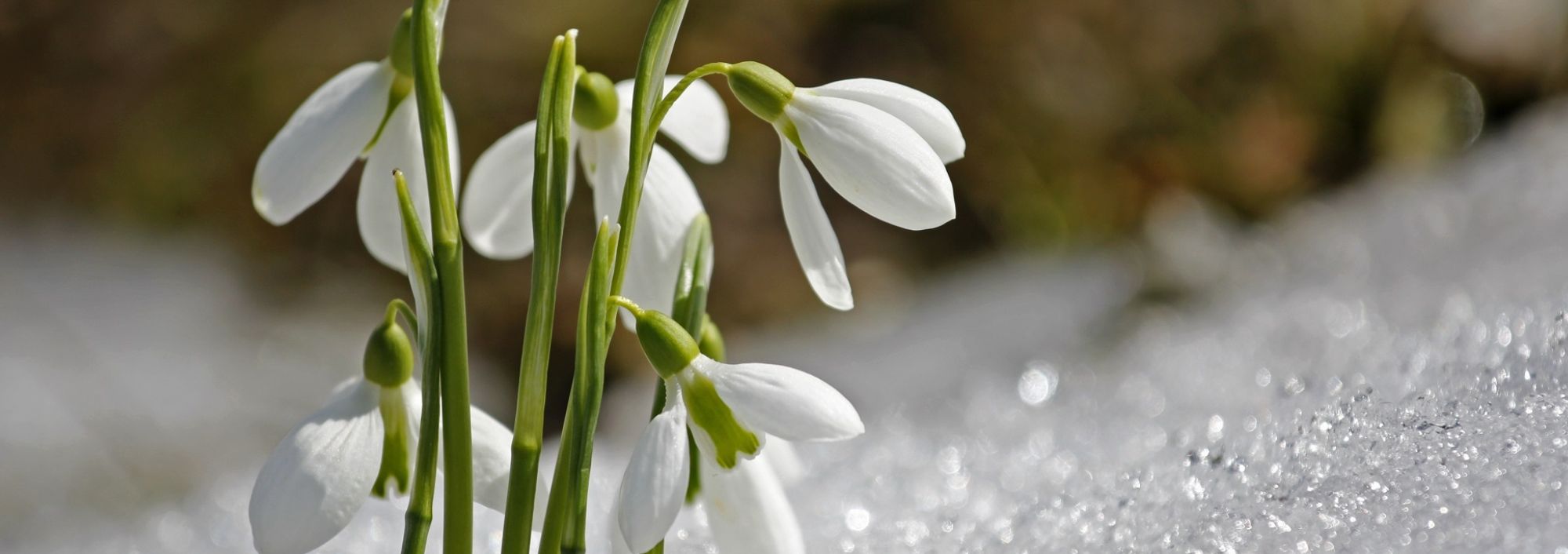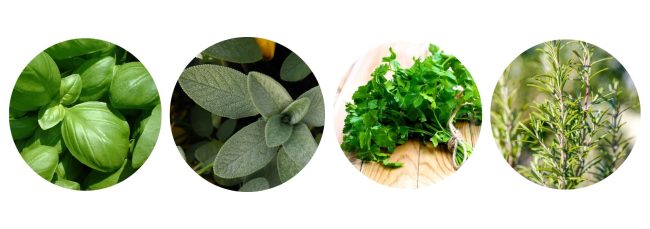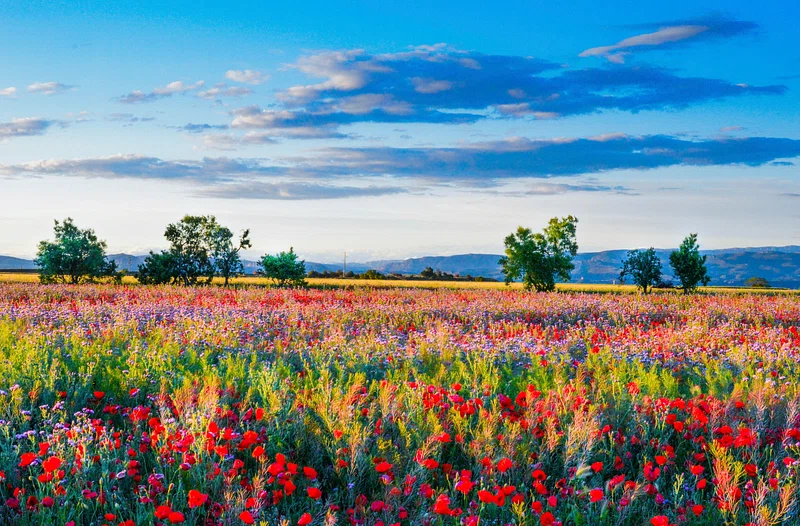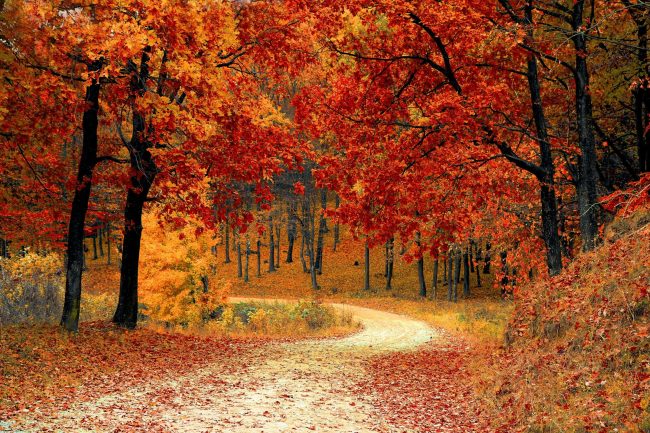Seasonal Gardening Articles

Winter
Winter Damage Concerns for Trees
Protecting Young Trees from Animals and Other Damage Over Winter
Maintaining Your Festive Houseplants
Choosing the Right Christmas Tree
Garden Catalogs
| It’s winter – from now through spring, if you are a gardener, expect garden seed catalogs. If you plan to place an order or two, here are a few tips and ideas that you might find helpful. First, do an inventory of what seeds you already have. Many seed packets have more seeds than we use in one season. If stored properly, many are fine to use the next season or beyond (see How to Store Leftover Garden Seed). Then compare the list of seeds that you have with the list of seeds you plan to order. Be mindful of the available space you have to plant. I plant both a patio container garden and a garden plot at a local community garden. One of my favorite winter activities is making sketches of possible garden layouts. This helps me figure out how much space I actually have to plant. It’s not unheard of to have great expectations and order many wonderful selections only to run out of room to plant them. If you keep a garden journal, review how last year’s season went and give some thought to whether it makes sense to expand or reduce your efforts. Are there plant varieties that worked really well and deserve another spot in the garden or some that need not apply for the 2025 season. If you don’t keep a garden journal, think about starting one. It’s a great way to keep your garden life organized (gardener’s confession: this is advice I often give but am not so great at following but I do start a journal every year…). There are many ways to keep a journal from good old paper and pencil to computer spreadsheets or Smart device apps. When making an order, pick a packet of something new. Trying something new, whether a vegetable, flower or herb can be exciting as well as help widen your garden repertoire, if the new item is a success (I do this with recipes too. Every month, I try a new recipe and if it works, I add it to the list of meals I like to make). Lastly, if you garden with children, let them make some selections, particularly with vegetables. If they plant vegetables, help them grow and harvest them, kids are more likely to try them at the dinner table. For gardening questions, please feel free to contact me at margaret.murphy@wisc.edu or at 715-726-7957.Remember, it’s never too early to think about gardening! |
Winter Salt Injury and Salt – tolerant Landscape Plants
Analysis of Dormant Shade Trees
Fun Facts about the Christmas Tree
Winter Care of Houseplants

Spring
What do Sunflowers, Cows and Jeans have in Common?

Margaret Murphy
I came across this amusing question while looking through a Junior Master Gardener manual. Did you guess the answer? Soil. Sunflowers grow in soil, where they receive nutrients, water and support. Cows feed on plants that grow in soil and jeans are made from fibers that got their start in soil. We probably don’t spend much time thinking about the fact that many of the items we use every day or foods that we eat wouldn’t exist without soil but as gardeners we do need to pay attention to the health of our soil.
Soil is an intricate composite of minerals, organic materials, water and air. Healthy soil is teeming with life, much of which is microorganisms that include bacteria and fungi. Microorganisms are essential to decomposing organic remains and recycling soil nutrients. One key to healthy soils is organic matter. Almost all garden soils benefit from the addition of organic matter. It can improve soil texture and help build and stabilize soil structure. In turn, this improves root growth and increases the moisture absorption, aeration and nutrient-holding ability of the soil. Organic matter also helps to feed those microorganisms that work so hard in the garden.
As crops grow, the amount of organic matter will lessen unless organic materials are added back in. Types of organic matter include organic mulches such as grass-clippings (not treated), straw, and newspaper as well as shredded tree leaves, green manure (cover crops), animal manure (well-aged), and compost.
Adding organic matter improves soil fertility; however, animal manures and plant material may not provide a complete diet for plants. Soil may also require additional fertilizer. If you are unsure about the fertility of your garden soil, consider getting a soil test done. In addition to telling you the level of organic matter in your soil, a soil test will determine whether or not there is a need to apply additional amendments.
A soil test will also tell you the soil pH. Knowing your soil pH is important because it affects the way a plant is able to take up nutrients. Some plants have a strong preference to the pH they grow in. Blueberries, for example, need a more acidic environment with a soil pH level between 4.5 to 5.5. Knowing the pH of your soil helps you choose the right plant for the right place.
Spring is a great time to get a soil test done. That gives you time to incorporate any soil enrichment needs before planting. It is recommended that you have a soil test done about every three to five years. You can contact your local county Extension office for more information.
And remember to tend your soil like you do your plants. See you in the garden.
Kitchen Herbs

Margaret Murphy
When planning my garden, together with vegetables and flowers, I always include herbs. The aroma of fresh herbs just seems to brighten the spirit. Some of my favorite herbs to grow are often referred to as culinary herbs because they are commonly used in the kitchen for cooking.
Of course, sweet basil is one. The term basil is believed to come from the Greek word basilikon, meaning ‘royal’ or ‘king’; hence, the herb’s distinction of being called the ‘king of herbs’. Given its lovely fragrance and surplus of uses, I’d say it is aptly named.
Basil is easy to grow. Most often it is direct seeded into the garden. Make sure to sow after the danger of frost has past as it is cold sensitive. Plant in a sunny area. After the seedlings develop their “true leaves”, thin plants to about to four to six inches apart. You can harvest basil leaves throughout the growing season. Frequent trimming will encourage new growth and keep the plant bushy. There are many varieties available to plant. Some fun choices I have grown are cinnamon, lemon, lime and Thai basil.
Basil also grows well in a container, which is how I grow most of my herbs. Keep in mind though that, as with all annuals, the plant will eventually flower and die so keep a packet of seeds handy for sowing another crop.
Basil can be added to so many dishes the list seems unending. There are recipes for stews, soups, meat dishes, fish dishes, egg dishes, vegetable dishes, sauces, and even fresh fruit desserts.
Another herb on my culinary list is common sage. A native to the Mediterranean region, garden sage is a perennial though in our climate it is usually grown as an annual. Sage grows easily from seed; however, transplants are preferred to get a harvestable plant quicker. Plant after the last frost or if starting by seed, start indoors six to eight weeks before the average last frost date. Leaves can be harvested as needed through the season. Young leaves can be eaten fresh in salads but sage is often used to flavor savory dishes containing poultry, stuffing and hearty vegetables.
And then there is parsley, an often-underutilized herb too long associated with being just a garnish on a dinner plate. But parsley is rich in flavor and considered a natural breath freshener. Parsley is a biennial but in our region is treated as an annual. The two most common culinary varieties are the Italian flat-leaf and curly-leaf. Each is easy to grow by direct seeding into the garden or a pot. Plant in the spring just before the last predicted frost; however, be patient as parsley is slow to germinate. There’s an old saying that says parsley goes to the devil seven times before it grows. If planted in the garden, a helpful aid to keeping track of rows of newly seeded parsley is to plant radish seeds in with the parsley seeds. The radish will germinate quickly to mark the row where parsley is also planted.
You can harvest the leaves as they mature. Snip stalk close to the ground to encourage continued growth. There is a superstition that it’s bad luck to move parsley from garden to garden. It stems from the fact that parsley is hard to transplant once established so it should be sowed where it is to grow. Fresh parsley works with most foods and can be added to salads, sauces, soups and, yes, used as a garnish for an after-dinner treat.
Keep in mind that parsley is a host plant for the black swallowtail butterfly and a favorite of rabbits, so don’t be surprised if it disappears from your garden faster than expected.
Lastly, I want to mention rosemary, another favorite herb. Like most herbs, this Mediterranean native has a rich history in folklore. In the Middle Ages rosemary was used to protect against evil spirits. If placed beneath your pillow, it was said to ward off bad dreams. Today, rosemary symbolizes love and remembrance. Traditionally, sprigs are scattered on the grave of beloved family members to show that they will not be forgotten. Rosemary also has a reputation for improving memory. So, if you are having trouble remembering where the car keys are, grab a sprig of rosemary and give it a sniff.
Wild rosemary can be found growing along the coast of Italy, Greece, Spain and France. Its fondness for the seaside played a role in the herb’s name, which comes from the Latin words ros (dew) and marinus (sea) or “Dew of the Sea”.
A perennial evergreen in warmer regions, here in the Midwest we treat rosemary as a tender perennial. While it can be grown from seed, like sage, transplants are preferred. Seeds germinate very slowly and germination rates are low. If you start a plant from seed sow the seeds indoors eight to twelve weeks before the last predicted spring frost.
Rosemary does not transplant well so northern gardeners often grow it in a pot and take it indoors for the winter. Make sure to put it in well-drained soil and be careful not to overwater. To keep this fragrant herb happy indoors, place in a cool, sunny location where the relative humidity is high.
Depending on the variety, rosemary can be an upright shrub or a creeping plant. Both are used for cooking. Rosemary has a distinctive sharp flavor and pairs well with many different foods including roasted meats, cheese, bread and poultry. I enjoy it with potato dishes and other vegetables like carrots and onions. Harvest leaves just before use. Keep in mind that the flavor of rosemary often gains strength the longer a dish cooks.
Remember, it is never too late to make room for an herb garden!
Ideas for Spring Flower Plantings

Margaret Murphy
Here are a few flowers that tolerate cooler temperatures and light frosts. They can be transplanted in early spring (whenever that may be in Wisconsin).
Pansies (Viola x wittrockiana) always seem to be described as flowers that will make you smile. I guess it’s because they come in so many festive colors. Not a fan of summer heat, pansies prefer cooler temperatures. They can tolerate frost and have been known to readily survive a late-season snowstorm. Pansies prefer moist, well-drained soils. Plant in a sunny or partially shaded location. The flowers are edible, and their petals are often used to color butter or to decorate cakes and pies.
One of my favorite flowers of all time are snapdragons (Antirrhinum majus). Sun-lovers, they come in a wide array of colors and sizes. Varieties range from only six inches high to almost three feet tall. Grown as an annual in Wisconsin, they are considered easy to grow and offer a long bloom time (though they may wane during the hot summer months). A great flower to plant for children as they love opening the “jaw of the dragon” and letting it snap shut. Snapdragons make a nice addition to a cutting garden as they look great in bouquets.
Alyssum (Lobularia maritima) is reported to tolerate temperatures down to 28ºF. Commonly found sporting white flowers, varieties of pink, lavender and blue can also be found. Alyssums are low-growing plants that work well in garden borders though some cultivars have a trailing habit that would work in a hanging basket. They prefer a sunny or partially shaded spot.
For an annual with interesting foliage, consider planting the Bells-of Ireland (Molucella laevis). The stems are thickly covered with bell-shaped structures called calyxes. Within the calyxes bloom petite, white flowers resembling the clappers of a bell. They can be planted outdoors once nighttime temperatures are above 40ºF. They favor moist soils, and full sun though will manage fine in part shade. Keep in mind they often self-seed in the garden if flower stalks are left on the plants until dried. Blooming stems make an excellent addition to dried or fresh cut flower arrangements.
Skunk Cabbage (Syplocapus Foetidus)
One of the first native plants to bloom in early spring in the upper Midwest is Symplocarpus foetidus, commonly called skunk cabbage. Skunk cabbage is one of just a few plants that exhibit thermogenesis, or the ability to metabolically generate heat allowing it to bloom while there is still snow and ice on the ground. So, the next time you are out for a walk in the woods, keep an eye out for this amazing plant. For more information and to see photos, check out the article, Skunk cabbage, Symplocarpus foetidus.
Gardening with Kids
Margaret Murphy
Gardening is a great way to connect (or reconnect) kids to nature but it can offer so much more! Gardens allow children to interact and get curious about the natural world. Figuring out what a plant needs to grow. How does the temperature affect your garden? What happens if it doesn’t rain for a while or if it rains too much? Which bugs like which plants? Gardening is an easy way to peak your child’s interest in natural science.
Then there are the math skills they can practice by counting seeds, measuring out space between plants or rows, or keeping track of how many tomatoes one plant can produce and how much does that give your family to eat?
Other wonderful things they can learn include keen observation skills, responsibility, nurturing and, of course, patience. Plus, creating a garden space just for kids is just a good way to encourage some fun, outdoor family time this summer.
Here are a few suggestions for planning a children’s garden.
· Consider the garden design. Make it fun. Create interesting geometric patterns like triangles, circles, or squares. Perhaps draw out a pet’s name or a child’s initials. If space is a challenge, think about a container garden on a deck or patio. Get creative with types of containers to use such as decorated pots, bowls, or cups. Or go even further outside the box and plant in an old boot, or a childhood toy.
· Encourage kids to decorate their garden with figurines or painted stones. Use colorful labels to mark the plant rows.
· Incorporate a theme into the garden. Set up a Rainbow Garden that includes all colors of the rainbow. An Alphabet Garden challenges you to find a plant for each letter of the alphabet. Plant a Butterfly Garden that provides food for both butterflies and caterpillars. Pizza Gardens can also be fun. Grow the ingredients for a homemade pizza including tomatoes, basil, and oregano. If grown in their own garden, you may be able to sneak in some onion and green pepper. If you have space, try building a sunflower or corn hut.
· If possible, grow a variety of plants. A mixture of herbs, fruits, vegetables and flowers can make your child’s garden more interesting and engaging. Choose plants with very different flowers shapes such as snapdragons, lilies, or sunflowers. Try vegetables with unusual colors like rainbow chard, yellow tomatoes or purple carrots and use this as an opportunity to teach your kids where their food comes from. Think about how we use our senses to learn. Many plants have curious textures like Lamb’s Ear, which is soft and wooly to the touch. Plus, different plants can have vastly different smells or no smell at all. Crush a leaf of mint or other garden herbs and enjoy!
Don’t forget to teach them about proper garden maintenance. Make a game of weeding and watering. Having smaller tools for younger children may help them get more involved.
If you are unsure of your child’s interest, keep it simple. Promote the idea of keeping a gardening journal. This way they can keep track of what worked or didn’t work and jot down ideas for next year. And if your child’s garden yields more weeds than anything else or the neighborhood critters end up eating more of the produce than you, don’t despair; it’s the journey along the way that counts. Hopefully, gardening will cultivate a lifelong interest that they can pass on to their own children.
Happy Gardening!
Gardening Tips for Older Adults
Margaret Murphy
Gardening offers many benefits. For many, it’s an enjoyable form of exercise and provides activities that help increase strength, balance, flexibility and endurance. Just being outdoors surrounded by greenery can reduce stress levels and promote relaxation. Plus, there are the added benefits of having easy access to fresh, nutritious produce and the satisfaction of having grown it yourself.
However, as we age, some gardening activities may become more difficult. Less energy and limited mobility are often two of the biggest impacts of aging. Here are some ideas that can make gardening a little easier because growing older doesn’t have to mean giving up the garden.
To be kinder to your back, consider using raised beds. They can be constructed at a height comfortable for people who have trouble bending. Make them no more than four feet across to allow for ease of access from two sides. Another way to create upright access to plants, particularly to harvest, is by growing vertically. Cucumbers, squash, melons, beans and many other vegetables can be trellised. You can also attach containers to the side of a shed or on a fence to give your garden more height.
Another simple and convenient way to garden, especially if you want to downsize your garden, is to container garden. I grow about half of my vegetables in containers. I set them on tables or benches to escape stooping. Unused pots, bricks or boards also make handy bases for pots. Plus, with containers, I have no weeding! (see Vegetable Varieties for Containers).
Hand tools can be made more comfortable and easier to hold by taping foam around the grips. For hauling items, I find my 4-wheel garden cart to be invaluable. It’s stable and easy to pull. I also make good use of a kneeler that converts to a bench. The sturdy handles also help me get back on my feet. My mom, who gardened well into her late 80s, found switching to a lightweight, easy to coil garden hose made watering much easier.
Make yourself take regular breaks while gardening. Set a chair nearby preferably in the shade. Have water on hand to stay hydrated and remember to protect yourself from too much sun exposure. It’s best to avoid the heat at midday, so if you can, work in the garden early in the morning or late in the day. Remember, also, to change your gardening activity to avoid over-exerting one set of muscles. So, take some time to weed, then maybe switch to watering.
And let’s not forget the most valuable tip of all – if some tasks have become too difficult, ask for help. Although I sometimes like the solitude of being by myself in the garden, I have found that gardening with friends can be a lot of fun.
Grow More in Less Space
Growing up, I remember we always had a very large vegetable garden in the backyard. Mom was a marvel in the garden. I don’t remember a time when we didn’t have fresh vegetables to eat all summer long.
Over the years, the popularity of growing one’s own food has waxed and waned, but in recent times, the trend is once again to have edibles in the home landscape. However, not everyone has the room or time (or mobility) to keep a large garden. Small gardens are easier to manage and keeping your garden size small doesn’t mean you have to forfeit a bountiful harvest.
There are several techniques that can help gardeners get maximum productivity from a small space. The first is to interplant. With this technique you alternate rows of fast and slow maturing vegetables. For example, plant a row of leaf lettuce between two rows of tomatoes or cabbage. The fast maturing crop, lettuce, is harvested first leaving the space available for the slower crop to mature.
A variation on this, sometimes called intercropping, is when you sow a slow and a fast maturing crop together in one area. Again, the fast maturing vegetables are harvested first leaving space for the slow maturing crop. An example of this is to plant radishes (fast maturing) and carrots (slow maturing) together.
Similar to intercropping is the technique of companion planting. Though the science of companion planting is often anecdotal, the practice dates back centuries and has been employed in gardens all over the world. It involves growing two or more crops together that benefit or complement each other. A good example of this is the Three Sisters Garden, a technique pioneered by Native Americans. In this garden, corn, pole beans and winter squash are planted together. The corn provides a structure for the climbing beans, the beans put nitrogen back into the soil, and the squash leaves serve as living mulch that conserves soil moisture and shades out weeds.
Succession planting is another technique to consider. As soon as one crop is finished plant another in the same plot or container. For example, after early, cool season crops such as radishes and peas are harvested, replant with beans, beets or cucumbers. After you are done harvesting the cucumbers in late summer, you could plant another round of radishes for a fall crop.
Succession planting is also used to describe staggered plantings of the same crop. For example, you can make successive plantings of beets every two to three weeks until midsummer for a continued harvest.
Then there is the practice of growing food vertically using trellises, cages, stakes or hanging baskets. This is an increasingly popular concept and truly does offer a way to grow food even with very limited space. Many vegetables and fruits grow very well vertically including pole beans, peas, cucumbers, squash, melons, tomatoes and strawberries. Buy small-fruited varieties for crops such as melons, cucumbers and squash. An added bonus of growing your food vertically is you can bring the plants up to eye-level, which makes harvesting much easier.
Lastly, if you lack land to cultivate don’t despair. Many vegetables grow just fine in containers. All you need is a pot that provides good drainage and a sunny place to locate your vegetable garden. Most vegetables require a container that holds six to eight inches of potting soil though crops like tomatoes and other larger-sized plants will need deeper soil. Leaf lettuce, kale, chards, beets, cabbage, peppers, tomatoes, radishes and cucumbers are just a few types of vegetables that I have grown in containers. For a list of popular vegetables that are well-suited for growing in containers, check out the new University of Wisconsin Garden Fact Sheet, Vegetable Varieties for Containers, at https://pddc.wisc.edu/2020/04/20/vegetable-varieties-for-containers/.
Happy Gardening!

Summer
Summer Garden Bugs
Rosemary, a favorite herb
Checking in on Garden Tomatoes
Eggplant in the Garden
Harvesting the Fruits of Your Labor
Soldier Beetles in the Garden
Good things grow at our Local Farmers' Markets





